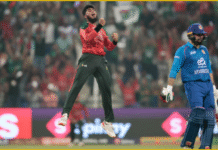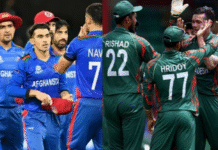
The United States returned to the pinnacle of women’s soccer with a 5-2 crushing of Japan in Sunday’s Women’s World Cup final at the end of a riveting tournament that pushed the sport into new territory. The Americans last triumphed in 1999 but women’s soccer is a vastly different sport than it was a decade-and-a-half ago with new nations forging their way into the elite amid an unprecedented level of global interest.
As Golden Ball winner Carli Lloyd demonstrated with her astonishing 16 minute hat-trick in the final, including a goal from the half-way line, the women’s game is delivering a level of excitement and quality that was non-existent in the 1990s.
Prior to the final, all that was missing from the tournament in Canada was a star individual, a player who could symbolize the new status of women’s soccer.
Once play had started in Vancouver, it took a little more than a quarter of an hour for Lloyd to emerge as the flag bearer for a new generation.
On Sunday, 53,341 fans packed into BC Place and millions more tuned in around the world to witness an American team annihilate the defending champions by storming to a 4-0 lead inside 16 minutes.
The onslaught was a cue for the overwhelmingly American crowd to start the party early with the Stars and Stripes able to fly high and proud for the remaining 74 minutes.
While few doubt that the US deserve to be back on top outside the Olympic arena, where they have won the last three gold medals, the growth of the women’s game should ensure they will take on a strong and diverse field in France in 2019.
Lloyd inspiration
There was a time when women’s soccer was considered either ‘unladylike’ in socially conservative circles or a pale imitation of the ‘real thing’ among many soccer fans.
Now there will be girls around the world seeing Lloyd’s brilliance and dreaming that they too, might one day grace the biggest stage in the women’s game and lead their nation to glory.
While Lloyd fittingly became the symbol of this tournament, there have been plenty of other players from other nations who will go home to discover they have become role models.
England, which considers itself the traditional home of soccer, had been slow to warm to the women’s game but the success of the Lionesses in securing third place, catapulted them to prominence at home and abroad.

US midfielder Carli Lloyd (10) celebrates with teammates after scoring against Japan during the final of the FIFA 2015 Women’s World Cup. Photo: USA TODAY Sports via Reuter
Australia, beaten by Japan in the quarter-finals are growing an impressive women’s program and hope to challenge their Asian rivals for regional dominance.
The Matildas showed their growing promise by beating Brazil in the second round but South America is also displaying signs of improvement with Colombia impressing many by reaching the last 16.
France played some exhilarating football before their quarter-final exit and the Netherlands are also catching up, while there are signs of African teams such as Nigeria and Cameroon closing the gap.
“Women’s football is a global game now, we have seen that at this tournament,” England coach Mark Sampson said.
“Who would have thought that Colombia would have produced the performances they have produced? I have been to France and seen the size of their program, the game is growing.”
Continued growth
Television ratings have long been strong in North America but, even despite late night kick-off times, countries such as France, Germany and England saw record numbers tuning in, measured no longer in thousands but in millions.
For Japan, the final was a painful jolt back down to earth after their triumph over the Americans in 2011 and their run to the Olympic silver medal a year later.
The ‘Nadeshiko’ may well have to undergo a change of generation — and perhaps look at evolving their tactics further from the short-passing approach that brought them so much success under coach Norio Sasaki.
But globally, all the signs point to continued growth for women’s soccer.
In Europe, big clubs from the men’s game — Bayern Munich, Paris St Germain and Manchester City — are investing in their women’s teams and that trend is likely to spread further.
And while FIFA officials were booed by fans before the trophy ceremony, the corruption-tainted global body’s women’s development staff must deserve plenty of credit for helping the game reach this stage.
Whoever takes over from outgoing president Sepp Blatter will have learned after this past month that they will be overseeing a sport played, watched, coached and refereed by both genders equally.
Source: Bd news24









